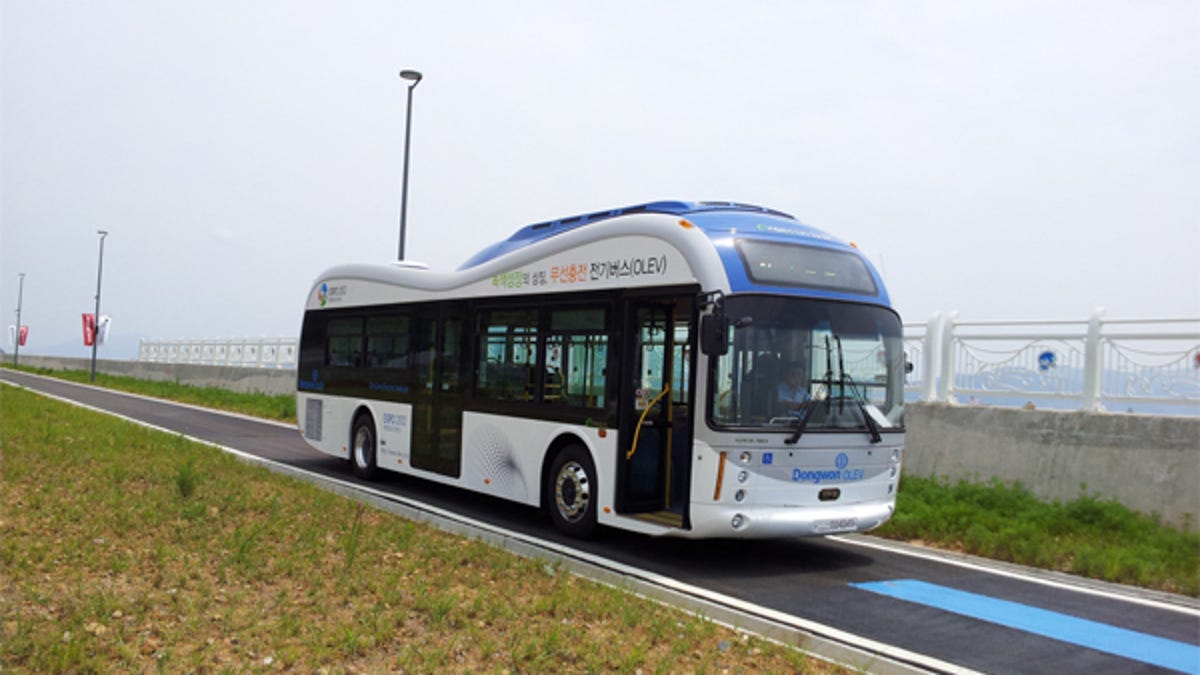Electric road charges buses while they drive
South Korea has launched the world's first road-powered electric vehicle network to charge public transport buses while they're on the move.

(Credit: KAIST)
South Korea has launched the world's first road-powered electric vehicle network to charge public transport buses while they're on the move.
The trouble with electric vehicles — well, one of them — is that in order to actually, you know, go anywhere, they have to be stationary for significant blocks of time so they can charge. Some measures have been proposed, such as solar panels that can provide energy while the car drives — and even electric highways that can provide power wirelessly.
South Korea is the first to deploy such a road: the Online Electric Vehicle (OLEV), developed by the Korea Advanced Institute of Science and Technology (KAIST).
Two electric buses will travel between Gumi train station and the In-Dong district, a 24-kilometre round trip, with power supplied via a technology called Shaped Magnetic Field in Resonance (SMFIR), developed by KAIST. Electric cables under the road's surface create electromagnetic fields. A receiving coil on the bus's underbody tuned to that frequency converts it to electricity, storing it in a small battery about a third of the size of a regular car battery. In this way, the cables can supply 60kHz and 180kW of power remotely at a stable rate, with a gap of around 17 centimetres between the bus and the road.
The power doesn't need to be constantly supplied, either; the cables only run underneath 5 to 15 per cent of the road, which means less roadworks involved in installation — and they can detect when a compatible vehicle is overhead, only switching on when one of the OLEV buses is passing by, making it safer for other drivers and pedestrians. That said, the technology does comply with international electromagnetic field safety standards.
If everything goes to plan, Gumi City wants to add 10 more buses to the OLEV network by 2015.

